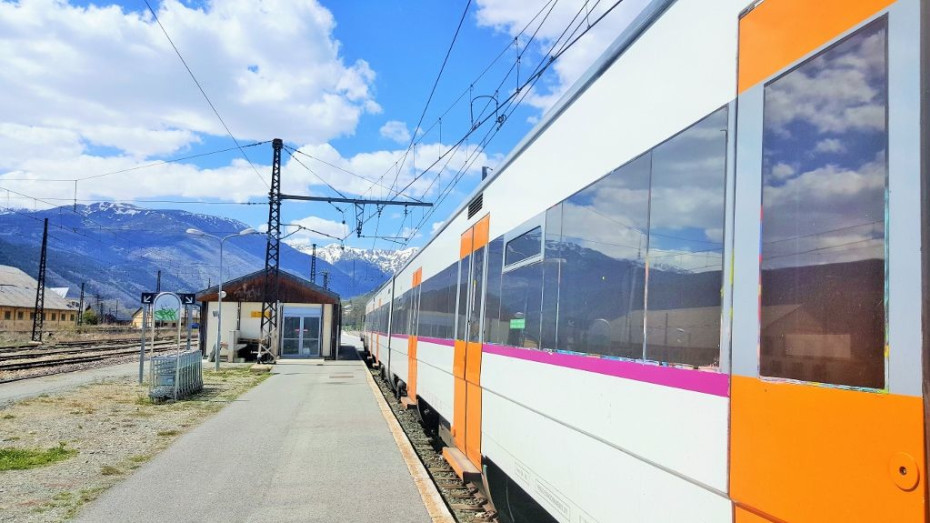Content

Regional Express (Spain)
Share
At a Glance
Travel Pass Supplement
Rail Pass Reservation Fees
Reservations
Not Available
Time of Day
Day
Accessibility
Accessing the train
Bikes Allowed
Train Specification
Attributes of the train
Has a Conductor
Country
Which country these trains operate in.
Spain
Travel Passes
Eurail
Interrail
Travel summary:
These Regional Express services are the exception to many of the 'rules' when travelling by train in Spain.
What particularly sets them apart is that seat reservations are not available, so they sit outside the list of the many names of the services which Spanish national rail operator, Renfe, uses for its services which do require reservations.
Also in cities and other urban areas, the local/commuter train services are known as Cercanias or Rodalies services - but these trains also don't fall into those categories, so these Regional Express services tend to be either:
(1) longer distance stopping trains to/from the big cities, in other words commuter trains on routes which extend beyond the urban area - particularly around Barcelona.
(2) The slower trains and local trains in rural areas - particularly in north-west Spain.
On routes they share with MD trains they call at more stations, so are slower, but when they share a route with a Rodalies or Cercanias train, they're faster.
Also a wide variety of trains are used for these Regional Express trains - they can be some of the oldest trains still used in Spain, so can lack modern conveniences such as power-sockets.
Wheelchair spaces also aren't available on the older trains.
But if you're in luck, you may be on a comparatively new train.
Tickets & rail passes:
Because seats can't be reserved on these trains tickets for journeys by them aren't USUALLY sold online by Renfe, so allow time to buy a ticket at the station prior to boarding.
But it's worth still looking up the departure times on Renfe before you head to the station to buy a ticket and hop on board - these trains don't operate frequently.
A negative of the fact that seats can't be reserved is that these trains can become crowded, particularly on the routes around Barcelona.
Also these trains are 2nd class 'Turista' class only.
Rail Pass users:
A tick in the box for rail pass users is that these are the only long(ish) distance Spanish train services, which don't require reservations.
However, don't plan to travel around Spain by these trains, they're not that common and many areas don't operate them.
Though they do operate on two routes to/from Barcelona, which enable the comparatively expensive reservation fees on the high speed trains between Spain and France to be avoided:
(1) Barcelona - Girona - Figueres - Port Bou - Cerbere (connect in Cerbere for Perpignan, Narbonne, Beziers, Montpellier, Nimes and Avignon)
(2) Barcelona - La Tour De Carol (connect in La Tour De Carol for Toulouse).
This second version of ShowMeTheJourney is exciting and new, so we are genuinely thrilled that you are here and reading this, but we also need your help.
We’re striving not to let anything get in the way of providing the most useful service possible, hence a facility has been set up with DonorBox which can be used to support the running costs and make improvements.
Instead of advertising or paywalls, your financial support will make a positive difference to delivering an enhanced service, as there’s a lot of ideas which we want to make happen.
So if you have found the info provided here to be useful, please consider saying thank you.

This is one of more than 100 train travel guides available on ShowMeTheJourney, which will make it easier to take the train journeys you want or need to make. As always, all images were captured on trips taken by ShowMeTheJourney.
